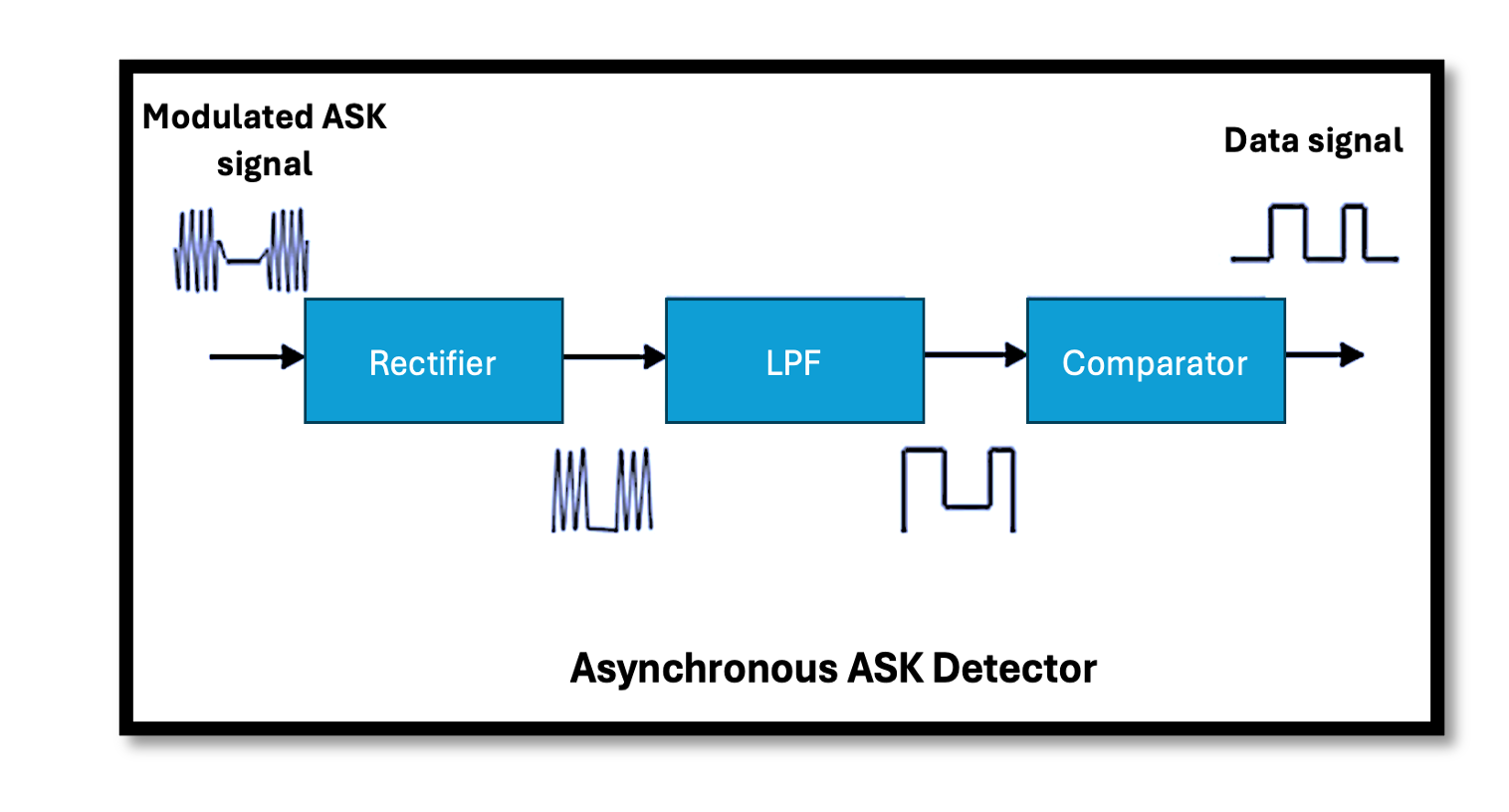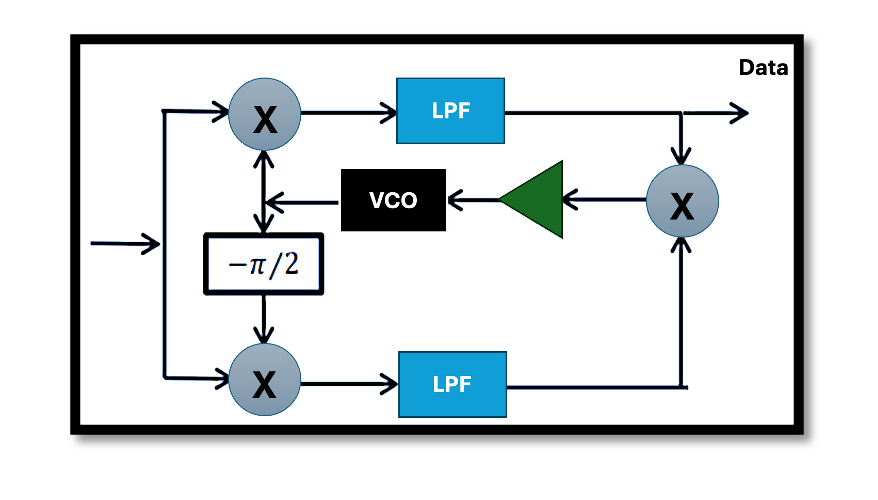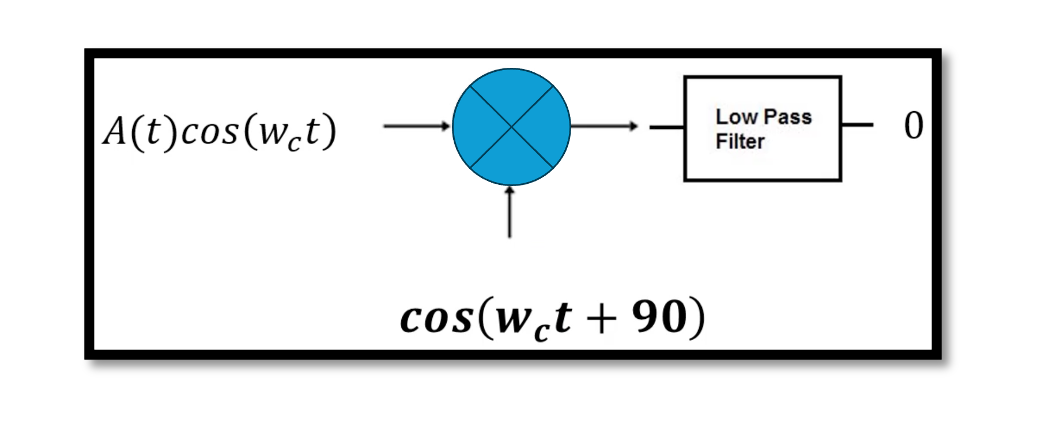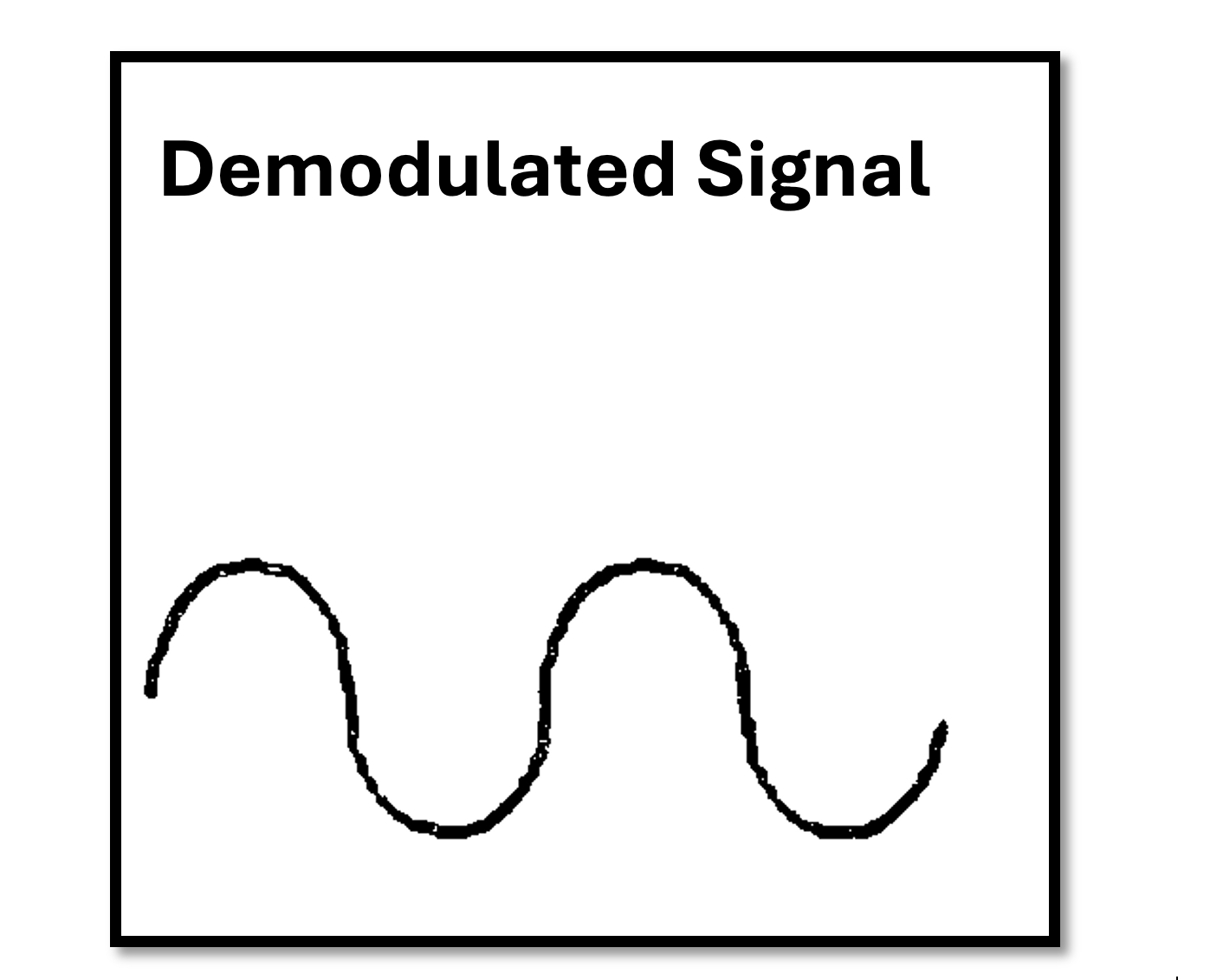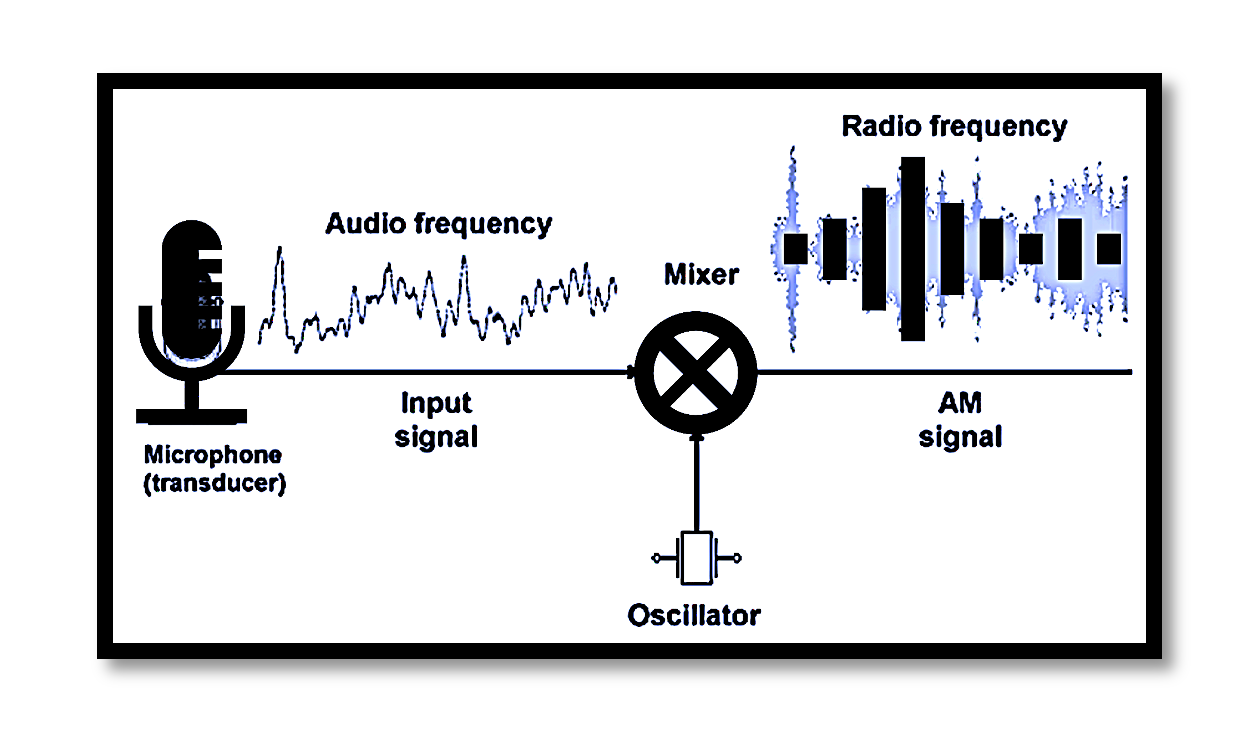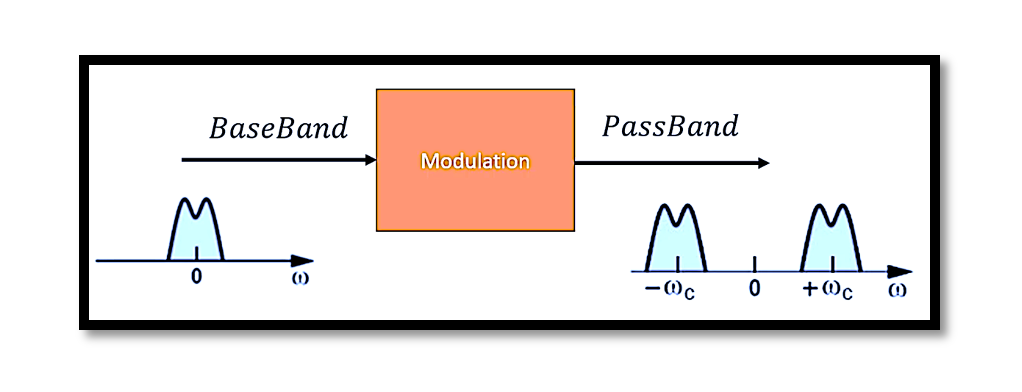Introduction Quadrature Phase Shift Keying (QPSK) is one of the most commonly used digital modulation schemes due to its efficiency in bandwidth utilization and robustness against noise. It encodes two bits per symbol by shifting the phase of the carrier …
Amplitude Shift Keying (ASK) is a fundamental modulation scheme in digital communication systems. It encodes binary data by varying the amplitude of a carrier signal. Due to its simplicity and cost-effectiveness, ASK is widely used in low-power and bandwidth-constrained applications …
Introduction to PSK Demodulation and Carrier Recovery Phase Shift Keying (PSK) is a widely-used digital modulation technique in communication systems where information is encoded in the phase of a carrier signal. To demodulate a PSK signal accurately at the receiver, …
Introduction to PSK Demodulation Phase Shift Keying (PSK) is a digital modulation technique where the phase of a carrier signal is varied in accordance with the binary data. PSK is widely used in modern communication systems due to its bandwidth …
Amplitude demodulation is a fundamental process in communication systems, allowing the extraction of the original information signal from an amplitude-modulated (AM) carrier wave. AM transmission is widely used in broadcasting, particularly in AM radio. This process of demodulation is essential …
As we delve deeper into the intricacies of communication systems, it’s essential to focus on key concepts such as channel capacity, bandwidth efficiency, and power efficiency. These aspects are vital for optimizing data transmission and ensuring that communication remains effective …
Amplitude Modulation (AM) is a widely utilized technique for modulating a carrier wave to transmit information over radio frequencies. This method varies the amplitude of the carrier signal in accordance with the information signal, which can represent audio, video, or …
Modulation plays a crucial role in ensuring efficient data transmission. Two critical aspects of modulation are detectability and bandwidth efficiency. Understanding these concepts is essential for optimizing communication systems to achieve maximum performance while minimizing noise and resource consumption. Detectability …
In electronic communication, a carrier wave is a waveform that is used to transmit information. This wave, also known as a carrier signal or simply a carrier, is typically of a much higher frequency than the information or message signal …
In communication systems, demodulation is the key to retrieving the original message from a high-frequency, modulated signal. This process essentially reverses modulation, separating the carrier wave from the information-bearing signal. Imagine a scenario where a voice message, now embedded in …


